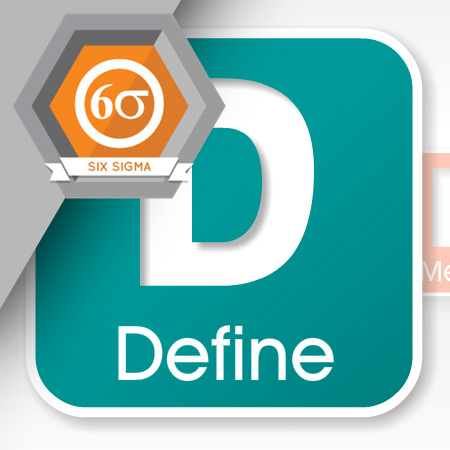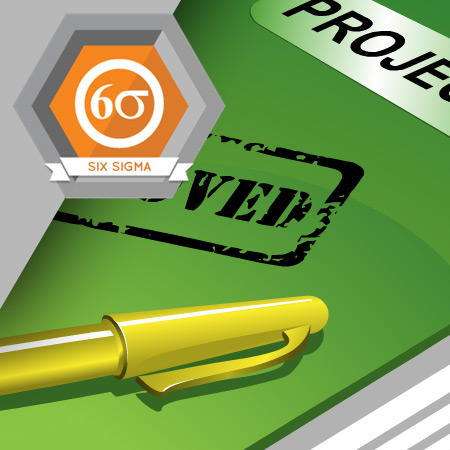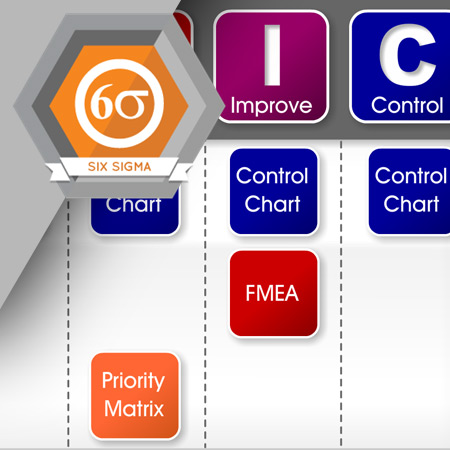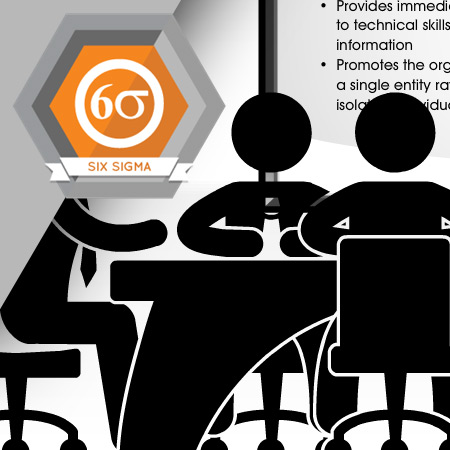
A Six Sigma project often requires a large amount of time from many people, and can be quite costly to the organization. The define portion of the DMAIC continuous improvement model provides the information and tools necessary to identify the issue causing decreased customer satisfaction, and to ensure the project will be a value-added activity.
Learning Objectives
- Define components of processes
- Define process boundaries
- Describe the difference between internal and external customers
- Define process owner
- Define process stakeholder
- List some means of identifying customers
- Identify means for collecting customer data
Language: English
Estimated Time (Hrs.): 1.2
Micro-module: No
Micro-module Series: No

Basic project management techniques are key contributors to the success of a Six Sigma project. Creating a project charter and performing risk analysis during the define phase helps a Six Sigma project stay on target and addresses potential risks.
Learning Objectives
- List the contents of a project charter
- Define problem statement
- Define purpose
- Define benefits
- Define scope
- Define results
- State the benefit of project risk analysis
Language: English
Estimated Time (Hrs.): 1.1
Micro-module: No
Micro-module Series: No

The success of a Six Sigma project depends on accurately identifying the current state of a process, and then assessing the problems within the process. A number of management and planning tools are available for this purpose.
Learning Objectives
- Define affinity diagram
- Define interrelationship diagraph
- Define tree diagram
- Define prioritization matrix
- Define PDPC
- Define activity network diagram
- Define matrix diagram
- Identify types and uses of matrix diagrams
Language: English
Estimated Time (Hrs.): 0.7
Micro-module: No
Micro-module Series: No

To complete the define phase of a Six Sigma project, it is necessary to be able to assess its performance. Business results are measurements of performance that can be applied to the business, project, or process.
Learning Objectives
- Define Defects per Unit (DPU)
- Define Rolled Throughput Yield (RTY)
- Define Defects per Million Opportunities (DPMO)
- Describe sigma level
- Describe process capability indices
Language: English
Estimated Time (Hrs.): 1.1
Micro-module: No
Micro-module Series: No

To be successful, a Six Sigma project must be executed by an effective team. Teams evolve over time, passing through definite phases of evolution until they find their place in the organization's Six Sigma structure.
Learning Objectives
- Define and describe the stages of team evolution
- List the different roles in a Six Sigma team
- Define brainstorming
- Define nominal group technique
- Define multivoting
Language: English
Estimated Time (Hrs.): 1.3
Micro-module: No
Micro-module Series: No

A wide variety of tools exist for use in the define phase of a Six Sigma project. Each tool can provide insight into an organization's processes and help with the development of a good project plan.
Learning Objectives
- Surveys
- Focus groups
- Interviews
- Audits
- Cause and effect diagrams
- Check sheets
- Graphical charts
- Sampling plans
- Advanced Quality Planning (AQP)
- Benchmarking
- Force field analysis
- Gantt charts
- Project Evaluation and Review Technique (PERT)/Critical Path Method (CPM)
Language: English
Estimated Time (Hrs.): 1.9
Micro-module: No
Micro-module Series: No
